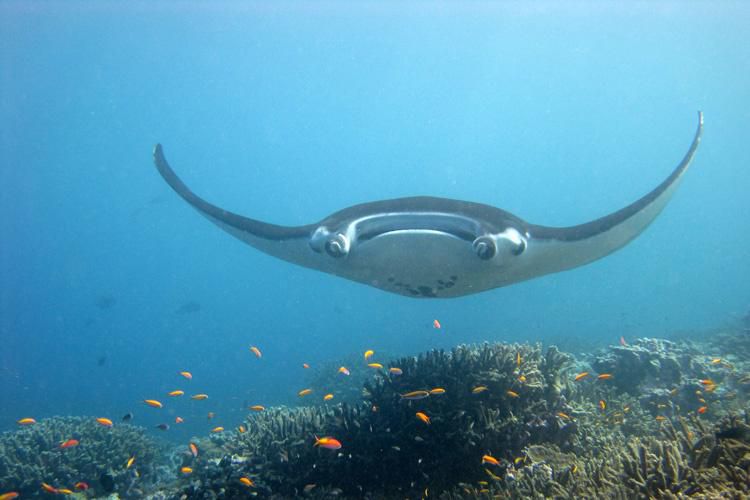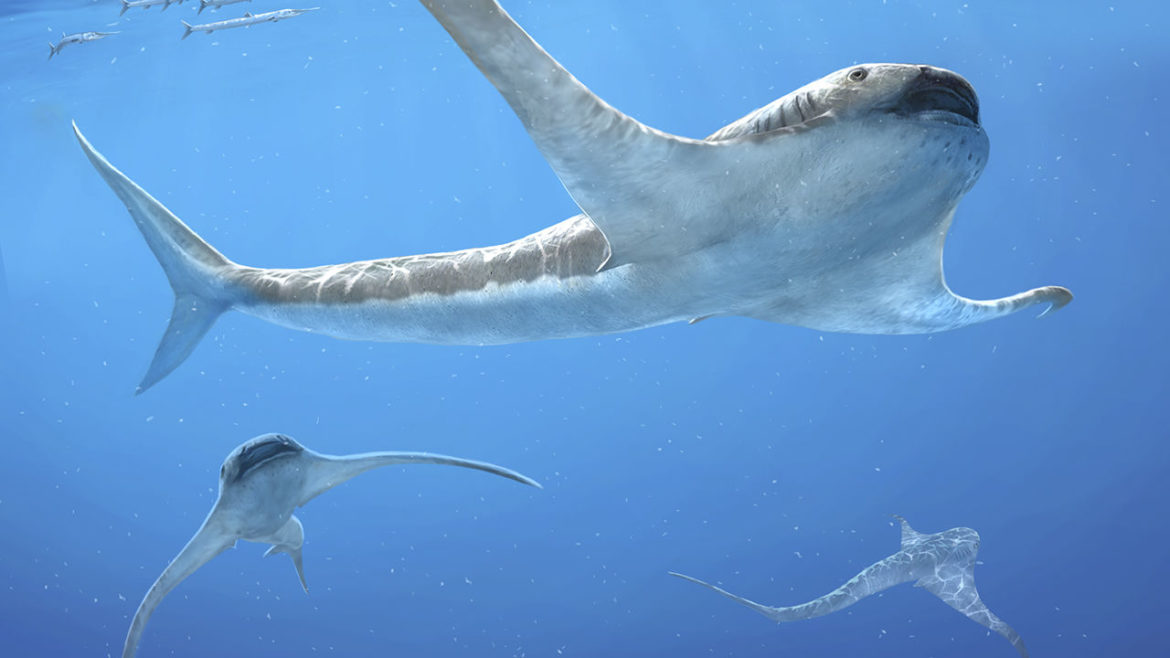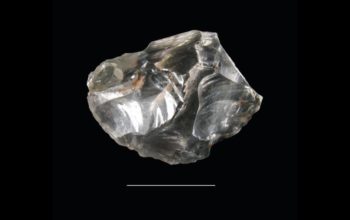Aquilolamna milarcae or “Eagle Shark” once soared through ancient seas near Mexico
The following written content from Gretchen Vogel

If you’ve ever seen a manta ray, you may be able to imagine what the ancient eagle shark looked like in action: a giant, ghostly figure flapping through Cretaceous era seas near present-day Mexico. For the first time, paleontologists describe the new species, discovered in a limestone quarry in northeastern Mexico in 2012, today in Science. Aquilolamna milarcae—a combination of “eagle shark” and the name of the museum that will host the specimen—was a plankton-eater that lived toward the end of the era of the dinosaurs, some 90 million years ago.

The shark’s most striking characteristic is its pectoral fins, which stretch to a 1.9-meter “wingspan.” (The shark was 1.66 meters from head to tail.) Researchers say those fins, combined with the animal’s broad head and mouth, suggest it was related to today’s manta and devil rays. But the animal’s tail fin—and the rest of its body plan—more closely resembles modern tiger sharks. That suggests, the researchers say, that such “wings” for underwater flight evolved several times independently.
The eagle shark was likely a slow swimmer that used its tail fin to propel itself and its pectoral fins to maneuver—and maybe add extra speed. The specimen lacks teeth, but that may because its teeth were tiny—similar to plankton-eating whale sharks and basking sharks—and decayed before they could fossilize. Read more from Science





